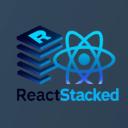
React & Ai Personalization In 2025
Discover how react and ai-driven personalization create dynamic, user-tailored web apps in 2025, boosting engagement with smart components.

0
0

Discover how react and ai-driven personalization create dynamic, user-tailored web apps in 2025, boosting engagement with smart components.
